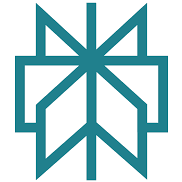What Is Patreon


( 1 )
Table of Contents
Patreon is a platform where creators earn recurring income directly from their supporters. It allows creators to share exclusive content, while patrons provide monthly financial support. Here’s what you need to know:
- Who Can Use It? Creators in fields like videos, podcasts, music, gaming, and more.
- How It Works: Creators offer membership tiers with benefits like early access, exclusive content, or personal interactions.
- Earnings: Creators typically earn between $315 and $1,575 per month.
- Fees: Patreon takes 8–12% of earnings, plus payment processing fees.
- Payment Models: Monthly subscriptions or per-creation payments.
- Key Features: Tools for community engagement, content sharing, and performance tracking.
Patreon gives creators a consistent way to earn while connecting directly with their audience.
Platform Basics
Creator and Patron Roles
Creators use the platform to share exclusive content while keeping full creative control. Their responsibilities include:
- Developing unique content for their patrons
- Setting up and managing membership options
- Engaging with their community
- Delivering promised rewards to supporters
Patrons, on the other hand, gain access to exclusive content by providing ongoing financial support. They can adjust or cancel their contributions at any time, offering flexibility for both creators and supporters. This setup often includes tier-based memberships, allowing creators to offer tailored benefits.
Membership Levels
Membership tiers allow creators to provide varying levels of value to their supporters. While some creators stick to a single tier, many offer multiple options to appeal to a broader audience.
| Tier Type | Typical Price Range | Common Benefits |
|---|---|---|
| Entry Level | $1-5/month | Behind-the-scenes content, early access |
| Mid-Range | $5-15/month | Exclusive downloads, patron-only posts |
| Premium | $15+/month | Personal interactions, custom content |
"The idea is to provide a source of income while you create."
Payment Options
A smooth payment system is essential for the platform’s usability. Payments are processed on the 1st of each month, and funds are available to creators after the 5th. The platform supports two main payment models:
1. Monthly Subscriptions
This model offers creators a steady income. Patrons are charged a fixed amount each month, regardless of how much content is released. Processing fees are as follows:
- Pledges over $3: 2.9% + $0.30
- Pledges under $3: 5% + $0.10
2. Per-Creation Payments
This option charges patrons only when new content is published, offering more flexibility for creators who release content less frequently.
Platform fees vary based on the chosen plan:
- Lite Plan: 5% platform fee
- Pro Plan: 8% platform fee
- Premium Plan: 12% platform fee
For international patrons using PayPal, an additional 1% fee applies to each pledge.
Main Features
Communication Tools
Patreon provides creators with tools to connect directly with their supporters. Features like direct messaging allow for personalized interactions, delivery of rewards, and sharing updates.
The platform also includes community-focused features like member profiles and chats. These additions enable real-time conversations and help build stronger connections between creators and their patrons.
"The Patreon chat feature is so, SO helpful and exciting… It just feels like a little hang-out for friends and I hope it leads to friendships within the community! How wholesome would that be?!" – Rachel Maksy, video creator
To further enhance community engagement, Patreon integrates with popular platforms:
| Platform | Key Features | Best Used For |
|---|---|---|
| Community Chats | Text-based, mobile app exclusive | Quick updates, casual discussions |
| Discord Integration | Voice & text channels, role management | Real-time community interaction |
| Discourse Integration | Forum-style discussions | In-depth conversations, Q&A |
These tools work seamlessly with Patreon’s content-sharing features, making it easier to manage and nurture creator communities.
Content Distribution
Patreon allows creators to share exclusive content in various formats, offering full control over access. Supported formats include text, images, videos, livestreams, and audio files.
Creators can tailor content visibility based on membership tiers, including:
- Public access
- All members
- Paid members only
- Free members only
- Specific tier access
For video content, Patreon provides several hosting options:
- Direct uploads to Patreon
- Embedded content from platforms like YouTube or Vimeo
- Downloadable video files
This flexibility gives creators the freedom to share content in ways that best suit their audience and goals.
Performance Metrics
Patreon offers analytics tools to help creators track their growth and improve their content strategies. These tools provide insights into:
- Patron growth trends
- Monthly earnings
- Engagement rates
- Content performance
- Popular membership tiers
The dashboard also displays real-time data on patron activity and revenue, helping creators identify what content resonates most with their audience. This data-driven approach supports smarter decision-making for content and membership planning.
Setup Guide
Account Creation
Before creating your Patreon account, make sure you have the following ready:
- A profile photo (1024×1024 pixels)
- A cover image (1600×400 pixels)
- A clear description of what you create
- Links to your social media accounts
Head to Patreon’s website and click "Create on Patreon." You can sign up using your email, Facebook, or Google account. Once signed in, name your page, specify if your content includes explicit material, and complete your profile setup.
Patreon provides a launch checklist to guide you through the essential steps. After setting up your account, it’s time to plan your membership tiers.
Tier Planning
A simple tier structure is often the most effective for new creators. Pages with starting tiers priced between $3 and $5 tend to perform better.
Here’s an example of a basic tier structure to get started:
| Tier Level | Price | Benefits |
|---|---|---|
| Entry | $5/month | Access to core content and community features |
| Mid-range | $10/month | Includes entry-level benefits plus exclusive content |
| Premium | $20/month | All previous benefits plus special perks |
Take inspiration from musician Jordan Rakei’s approach:
- Fan Tier ($6/month): Basic access to content
- Creator Tier ($14.50/month): Additional advanced content
- Super Creator Tier ($35.50/month): Premium features
- Mentee Tier ($83/month): Personalized mentoring sessions
Marketing Tips
After defining your tiers, the next step is promoting your page. Use multiple platforms to spread the word. For example, The Stacks Podcast promotes its Patreon through ads embedded into its episodes, while Time Team gained 8,000 patrons by regularly highlighting member contributions on Instagram.
Here are some strategies to help you grow your audience:
- Cross-platform promotion: Share sneak peeks of exclusive content on your social media channels.
- Content sampling: Offer free trials or previews to showcase the value of your membership.
- Community engagement: Publicly thank members for their support to build loyalty.
- Clear value proposition: Emphasize the specific perks available at each tier.
The New Rory & Mal Podcast, for instance, generates buzz by promoting members-only livestreams across platforms during a three-day campaign. To stay consistent and track what works best, use a content calendar to plan your promotions and engagement efforts.
Growth Strategies
Audience Growth
Research shows that consistent teasers can increase sign-ups by up to 197%, and the "rule of seven" suggests people need seven interactions with your content before taking action.
To grow your audience effectively:
- Content Previews: Share short snippets of exclusive material across platforms. For example, use Instagram to post members-only clips.
- Cross-Platform Promotion: Be active on key platforms. The vocal group säje shares highlights from their monthly member livestreams, giving potential patrons a glimpse of what they’re missing.
- Strategic Timing: Time your promotions wisely. A focused three-day campaign across multiple platforms can make a big impact.
These methods help attract new supporters and set the stage for creating rewards that resonate.
Reward Design
Creators who offer 2-5 membership tiers tend to see better results. Pages with tiers priced between $3 and $5 often convert more fans compared to those starting at $1.
Successful reward systems focus on scalability, clear value progression, and catering to different audience segments. For instance:
- Born Ruffians offers a $6.50/month tier with early access to releases, livestreams, and merch discounts – designed to scale easily.
- The First Degree podcast provides four bonus episodes per month at a higher tier, adding extra value.
- Jordan Rakei structures his tiers from basic fan perks to mentorship opportunities, appealing to a broad range of supporters.
Joe Budden’s team demonstrates how to keep patrons engaged by consistently delivering promised content and occasionally surprising members with exclusive interviews featuring big names from music and culture. This "under-promise, over-deliver" approach strengthens loyalty.
Community Management
Strong community management turns casual followers into dedicated patrons. For example, Time Team celebrated reaching 8,000 patrons by publicly thanking members on Instagram and sharing how their support fuels future projects.
Engagement strategies include:
- Interactive Content: Limited Resources dedicates episodes to answering member questions, while The Warning runs weekly Q&A sessions and shares behind-the-scenes studio vlogs to create a close-knit vibe.
- Personalized Recognition: Musician Alissa White-Gluz personally thanks her supporters by name in Instagram stories when releasing member-funded videos.
Tools like polls, Q&As, and member spotlights help deepen connections. For instance, The Minimalists podcast improved retention by introducing annual memberships, while Amanda Seales’ team boosted retention by nearly 10% after adjusting messaging based on member feedback. These efforts strengthen the sense of community and keep supporters engaged.
Conclusion
Patreon helps creators earn consistent income while forming direct connections with their audience. With creators typically earning between $315 and $1,575 per month, it’s clear why many rely on its dependable revenue model and useful tools.
The platform offers features that go beyond simple monetization. From content distribution and engagement tools to performance tracking, Patreon equips creators to build thriving businesses without depending on ad-based models. Tools like direct messaging, group chats, and email communication make it easier for creators to connect with their supporters on a personal level.
For creators aiming to grow their businesses, Patreon’s transparent fee structure (8–12% plus processing fees) ensures predictable earnings while keeping the focus on maintaining direct audience relationships. Its membership-based revenue model provides the consistency creators need to dedicate themselves to their craft.
As the creator economy evolves, Patreon continues to play a key role in helping creators turn their passions into lasting careers. Its growth and success stories highlight how the platform serves as an essential resource for creative professionals.






